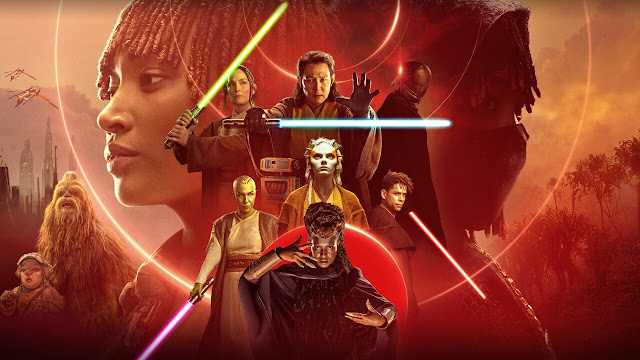After Disney bought Star Wars in 2012, expectations were high for how the entertainment conglomerate would continue making stories past the original six films helmed by George Lucas. To put it mildly, The Acolyte is the worst Star Wars series to premiere on Disney+ since the streaming service launched in 2019.
Set a century before the prequels, the show starts with an investigation after a mysterious assassin kills a Jedi Master. The script wants you to think it’s a murder mystery, but it’s quickly revealed within the first episode that the murderer is a twin named Mae training under a Sith Lord. And who gets blamed for the crime? Her twin sister, Osha. Both thought the other was dead after spending 16 years apart. After Osha’s name is cleared, she tries to find and prevent her sister from killing three other Jedi. By the end, Osha and Mae switch places Parent Trap-style — Osha sheds her optimism and becomes the apprentice to the Sith, while Mae turns from her evil ways and gets her memory erased.
To fill yourself in on all the forgettable plot details, just watch the YouTube reviews. Trust me, they are certainly more entertaining than the actual episodes.
Oh, where to begin? The Acolyte’s gravest sin is that it tells an incomprehensible story with absolutely no characterization. Mae and Osha may be the main characters, but you get no sense of who they are or what drives them. While Mae wants to kill the four Jedi that were responsible for the destruction of the witch sect she was raised in, she changes her mind after walking through a forest because she discovered Osha was still alive. How that caused her to abandon her vengeful mission, I do not know. Mae chooses to turn herself in to the Jedi but, an episode later, resists her arrest. Meanwhile, Osha has no clearly defined goal until she joins the Sith Lord because she learned her former Jedi mentor, Sol, killed one of her two mothers, Aniseya. The problem is that the mother’s death was justified.
In two flashback episodes each told from a different perspective, four Jedi confront the witches believing the Force-sensitive twins are in danger. Instead of de-escalating the situation, the witch cult, which the show seems to want to present as a sympathetic portrayal of the dark side of the Force, attacks by wielding . . . the dark side of the Force. The Jedi rightly defend themselves. Mother Aniseya transforms into a misty, demon-like monster to disintegrate Mae, prompting Sol to stab her with his lightsaber. If anyone else was in his situation, they would take the exact same action. However, the script wants you to think he’s in the wrong. In the season finale, he dies at the hands of Osha and is remembered as “one flawed man.”
Among the things not respected in this series is lore, most notably demonstrated in Mae and Osha being the first ones born from the Force. Showrunner Leslye Headland retconned the virgin-birth motif that set Anakin Skywalker apart as the Chosen One and applied it to the twins to make them as special, if not more so. Though they aren’t the Chosen Ones, Mae and Osha are one consciousness split into two bodies like yin and yang. The concept could be neat if the twin sisters actually had personalities.
The action is not much better, either. Fights are strangely similar to The Matrix, with characters using kung fu to block and kick instead of using the lightsabers attached to their waists. Inferior to the prequels’ fighting style, the hand-to-hand combat lacks imagination and looks wooden. Whenever lightsabers are brought into the equation, there’s no emotion or stakes to latch onto when characters die. That’s why the lightsaber duels are nothing more than glorified glow sticks smacking each other.
My experience with watching The Acolyte was riddled with numerous questions about the plot and constant yelling at the TV. Nothing made sense. The overarching message was non-existent. And worst of all, it dishonored Lucas’s creative vision for Star Wars.
Instead of portraying the Jedi as heroes, they are painted as the villains. Instead of pitting good against evil, moral relativism is the prevailing ethos of the story. “This isn’t about good or bad. This is about power, and who is allowed to use it,” Mother Aniseya explicitly tells her children and, by extension, the audience. No hope, only nihilism. Let’s hope a second season isn’t in our future.
Take the below video as a palate cleanser. This riveting cinematic trailer from Star Wars: The Old Republic tells a better twin-centric narrative in four minutes than The Acolyte does in four hours. The video game’s five other cinematics can be found here. Enjoy!
















